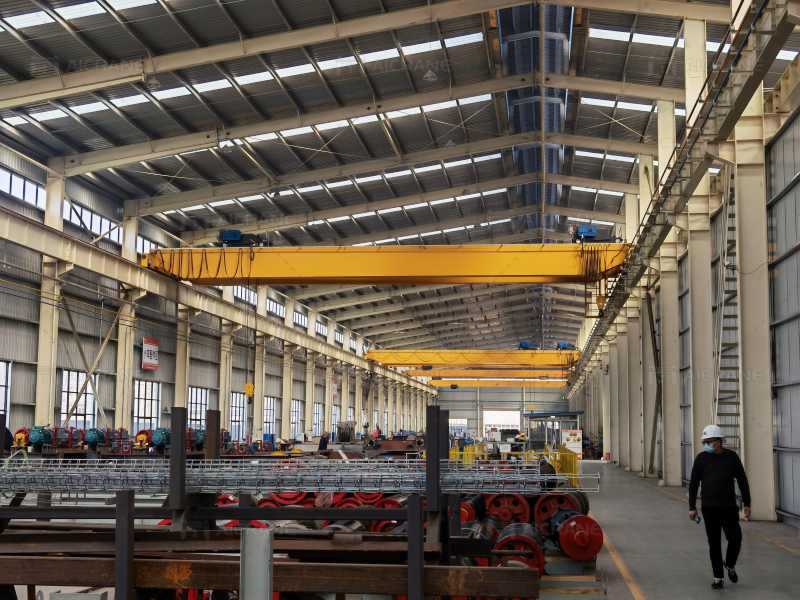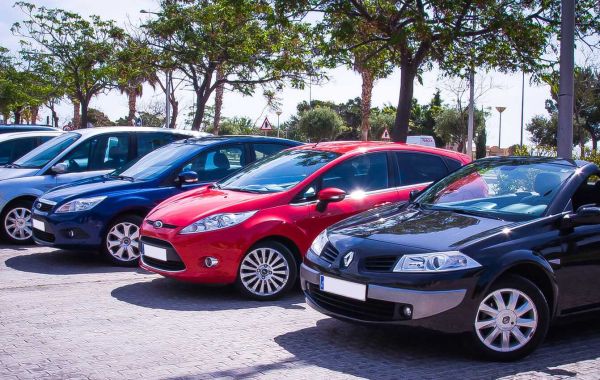A 50-ton overhead crane is a versatile and robust piece of equipment, essential in industries that require heavy lifting, from construction to steel production. While the crane's core specifications remain similar across sectors, factors like customization, usage frequency, operational environment, and additional features influence the price. Understanding the industry-specific needs and costs of a 50-ton overhead crane can help businesses make informed purchasing decisions, ensuring they choose a crane tailored to their operational requirements without overspending. In this article, we’ll explore a 50 ton overhead crane price across various industries and discuss what drives these differences.

1. Manufacturing and Warehousing Industry
In manufacturing and warehousing, 50 ton overhead cranes are essential for handling large components and heavy loads. These cranes are frequently used to transport materials, equipment, or inventory across large production areas. For these applications, a standard 50 ton overhead crane typically costs between $75,000 and $150,000.
- Customization Requirements: Manufacturing facilities often need cranes with specific lifting speeds or precise positioning capabilities to streamline operations, which can increase costs.
- Environmental Considerations: Warehouses usually operate in controlled indoor environments, so special weatherproofing or corrosion resistance is typically unnecessary, keeping costs relatively moderate compared to outdoor applications.
2. Steel and Metal Fabrication Industry
In steel and metal fabrication, the 50 ton overhead crane’s durability and load-bearing capacity are paramount. This industry requires cranes that can withstand high temperatures, frequent use, and exposure to dust and other particulates. Prices for these cranes in steel and metal fabrication typically range from $100,000 to $180,000.
- Heavy-Duty Components: Cranes in this industry require durable parts to handle extreme conditions, which can include reinforced girders and heat-resistant cabling.
- Continuous Duty Cycles: Given the nature of metal production, cranes are often in constant operation, demanding high-endurance motors and enhanced maintenance capabilities, which add to the cost.
- Safety Features: Cranes in metalworking environments may be fitted with specialized safety features, such as heat-resistant materials and additional load-monitoring systems, further raising the price.
3. Construction Industry
The construction industry uses 50 ton overhead cranes primarily for moving heavy materials and equipment. These cranes are often exposed to changing weather conditions and must be highly mobile, which can impact the price. The cost for construction-oriented cranes generally falls between $80,000 and $160,000.
- Weatherproofing and Durability: Since cranes in construction are frequently exposed to the elements, they require weatherproofing, rust-resistant coatings, and protective enclosures for sensitive components.
- Adaptability and Mobility: Some construction sites may require cranes with modular designs for easier transport between locations, which can increase upfront costs.
- Enhanced Safety Standards: Construction sites prioritize safety, so these cranes are typically equipped with advanced safety systems, including emergency stops, overload protection, and fall protection, all of which add to the price.

4. Mining Industry
Mining operations require extremely robust cranes capable of lifting heavy mining equipment, raw materials, and ores. Cranes in mining environments must be engineered for harsh, outdoor conditions and continuous use. Consequently, the price for a 50 ton overhead crane for mining ranges from $120,000 to $200,000.
- Heavy-Duty Construction: Mining cranes require high-strength components and corrosion-resistant materials to withstand exposure to dirt, dust, moisture, and other environmental challenges.
- Enhanced Power and Performance: These cranes often have reinforced motors and high-capacity winches to handle large loads efficiently.
- Advanced Monitoring Systems: Mining cranes may be fitted with load-monitoring technology and sensors to ensure operational safety and performance, which can significantly increase costs.
5. Shipbuilding and Marine Industry
The marine industry relies on 50-ton overhead cranes for building, maintaining, and repairing large ships and vessels. Given the size and weight of marine equipment, these cranes are built with enhanced structural integrity and corrosion-resistant materials. Prices in this sector typically range from $130,000 to $220,000.
- Corrosion-Resistant Materials: Due to exposure to saltwater and humid environments, marine cranes must be crafted from corrosion-resistant materials, such as stainless steel and galvanized metals.
- Specialized Lifting Capabilities: Marine cranes often require a greater reach and specialized lifting attachments for moving heavy ship components, which can increase customization costs.
- Precision and Stability Controls: Marine operations demand cranes with precise control systems for lifting and positioning, which adds to the complexity and overall cost.

6. Power Generation Industry
In power plants, 50 ton overhead cranes play a critical role in handling heavy machinery, turbine components, and other large equipment. These cranes are used indoors but require high precision and the ability to handle extremely heavy loads with accuracy. The price for a crane in the power generation industry can range from $100,000 to $190,000.
- High-Precision Components: Power generation facilities demand cranes with enhanced stability, control, and precision capabilities, as they often deal with delicate, expensive equipment.
- Durability and Safety Standards: Power plants operate under strict safety protocols, so cranes need advanced safety features, including automated load monitoring, emergency braking, and fail-safe mechanisms.
- Temperature and Environmental Control: In some facilities, cranes may require specific adaptations to work in high-temperature environments, which can raise costs.
As an experienced and professional lifting solution supplier, Aicrane has been in the crane business for many years and has much experience in this industry, no matter what type of overhead crane you are looking for to suit your lifting needs of the industry, you can just get a suitable from Aicrane Group with ideal price.
Conclusion
The price of a 50 ton overhead crane varies widely depending on the industry due to differing requirements for durability, safety features, and environmental resilience. Manufacturing and warehousing operations tend to have lower-cost crane options, while industries like mining, shipbuilding, and power generation may require customized, heavy-duty models that increase the crane’s price tag. Ultimately, the price reflects the specialized demands of each industry, from custom safety systems and reinforced materials to durability in harsh environments.
When investing in a 50 ton overhead crane, businesses should prioritize a balance between cost and quality, choosing a crane that meets industry-specific requirements without compromising on safety or performance. By understanding these industry factors, companies can make informed purchasing decisions, ensuring that their investment in a 50 ton overhead crane will deliver long-term efficiency and reliability.








